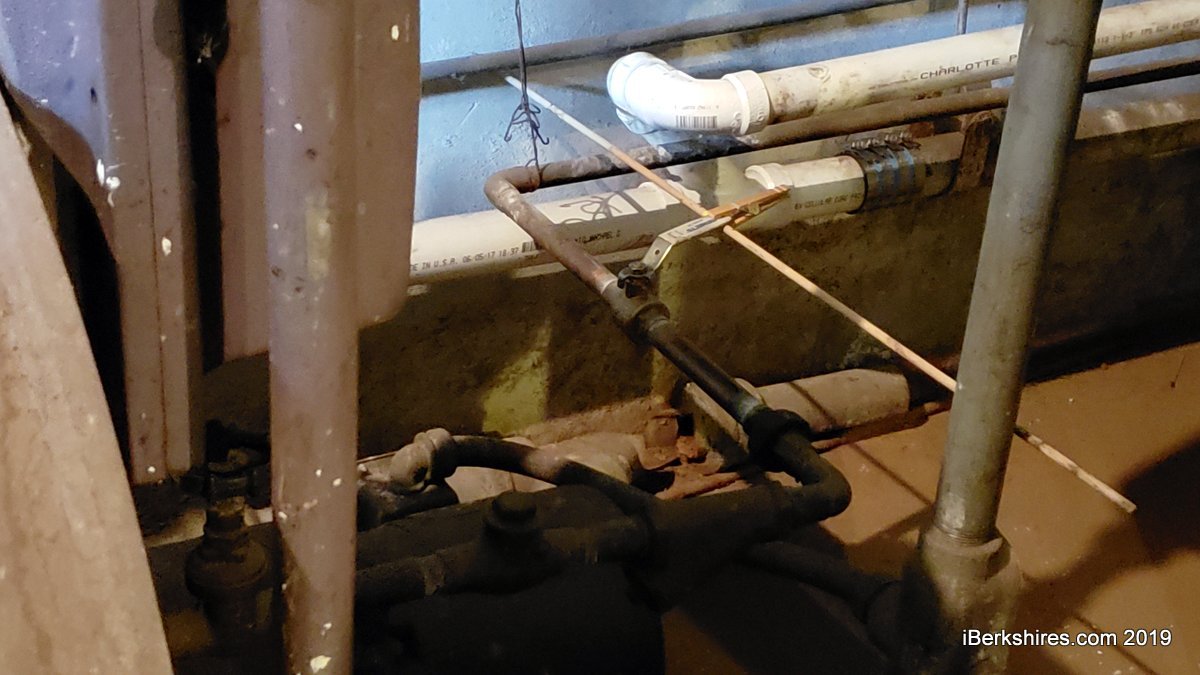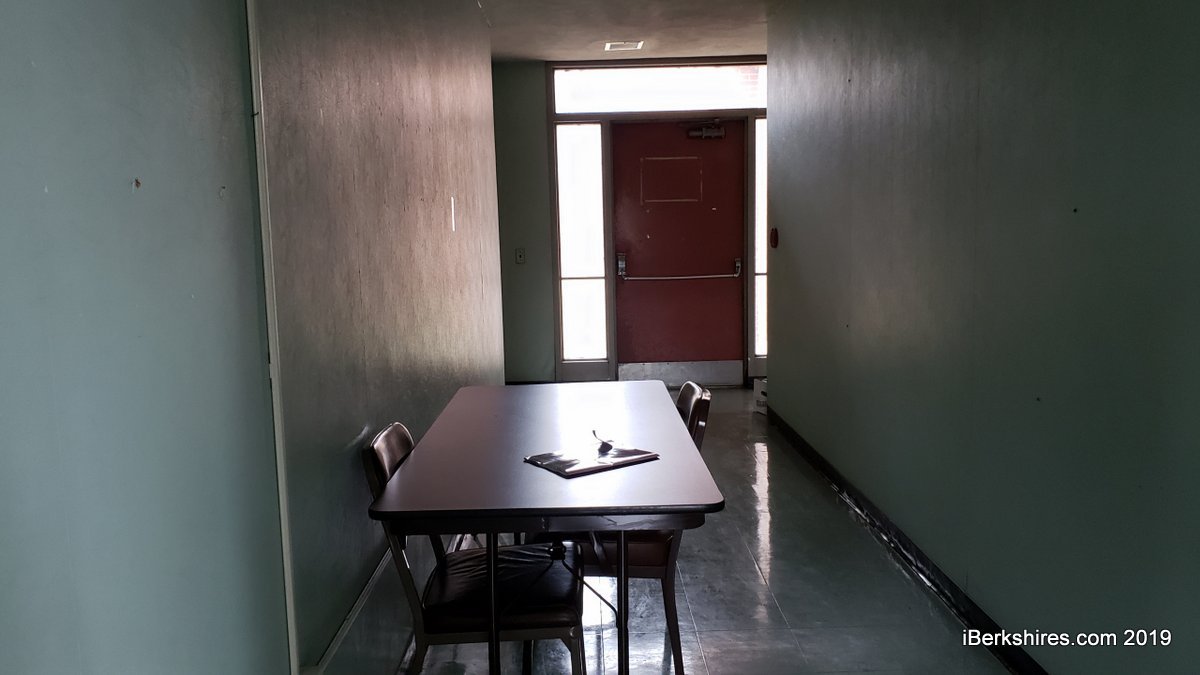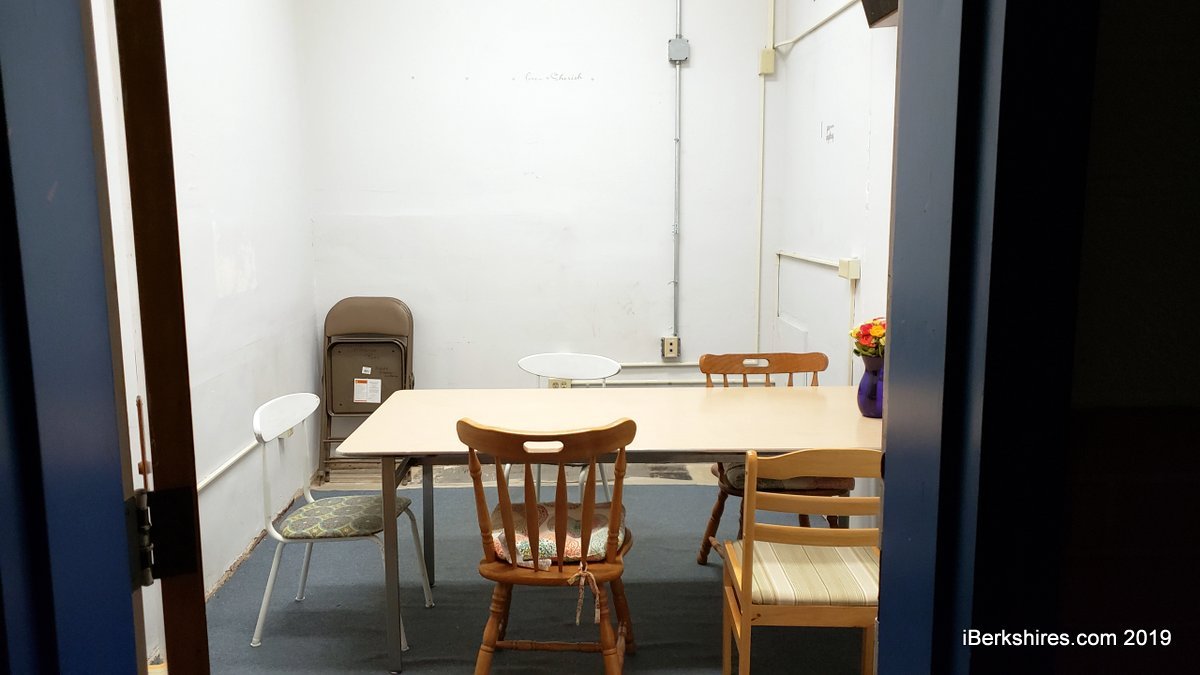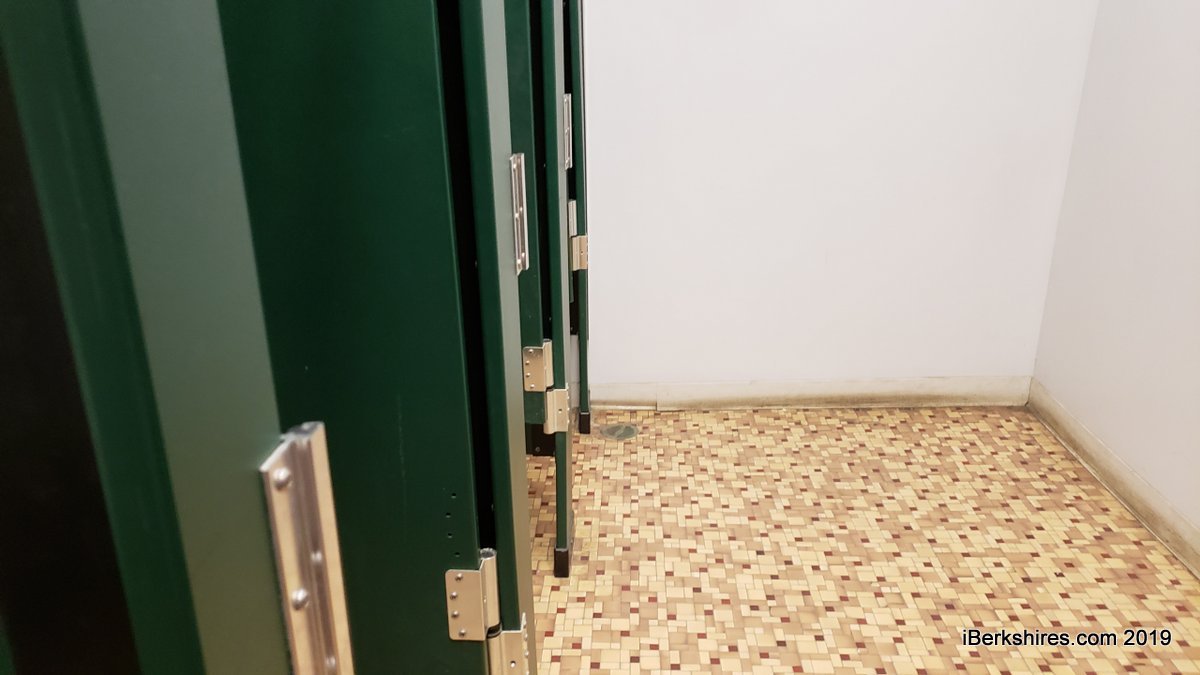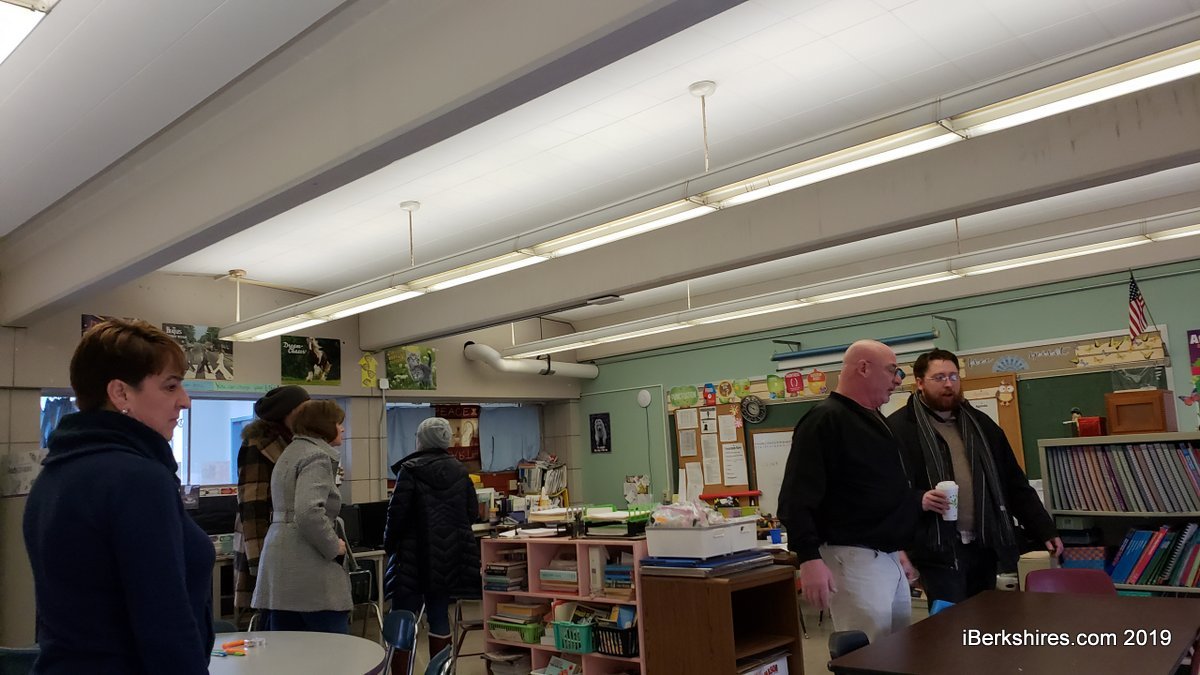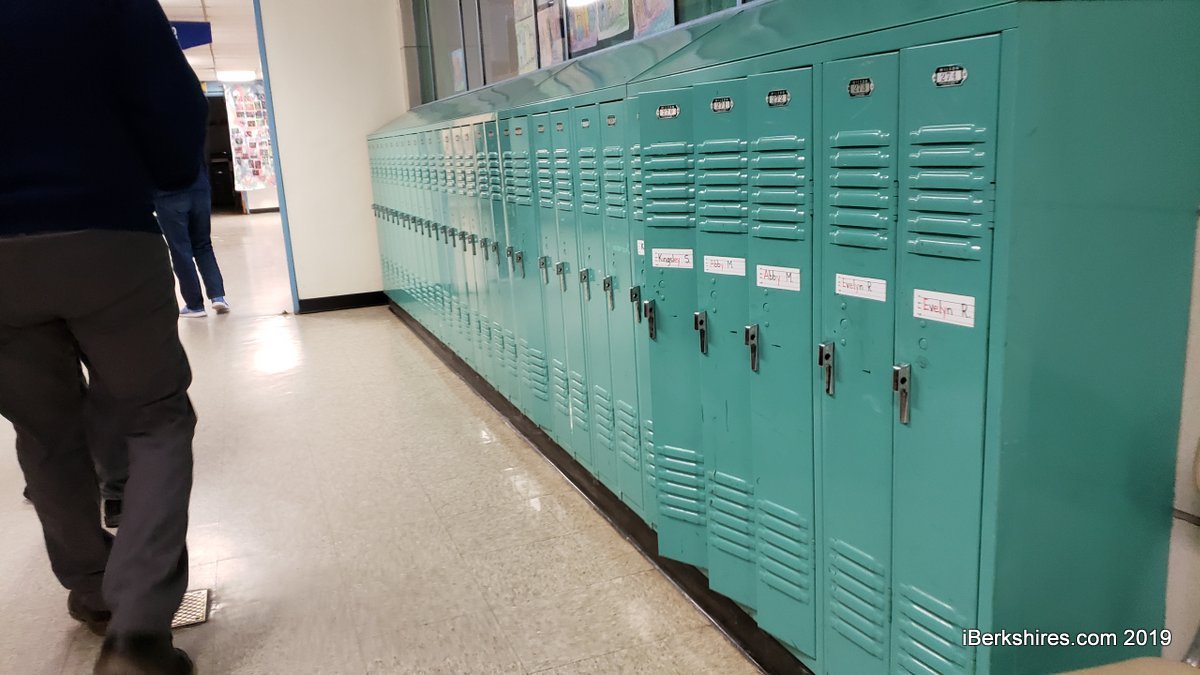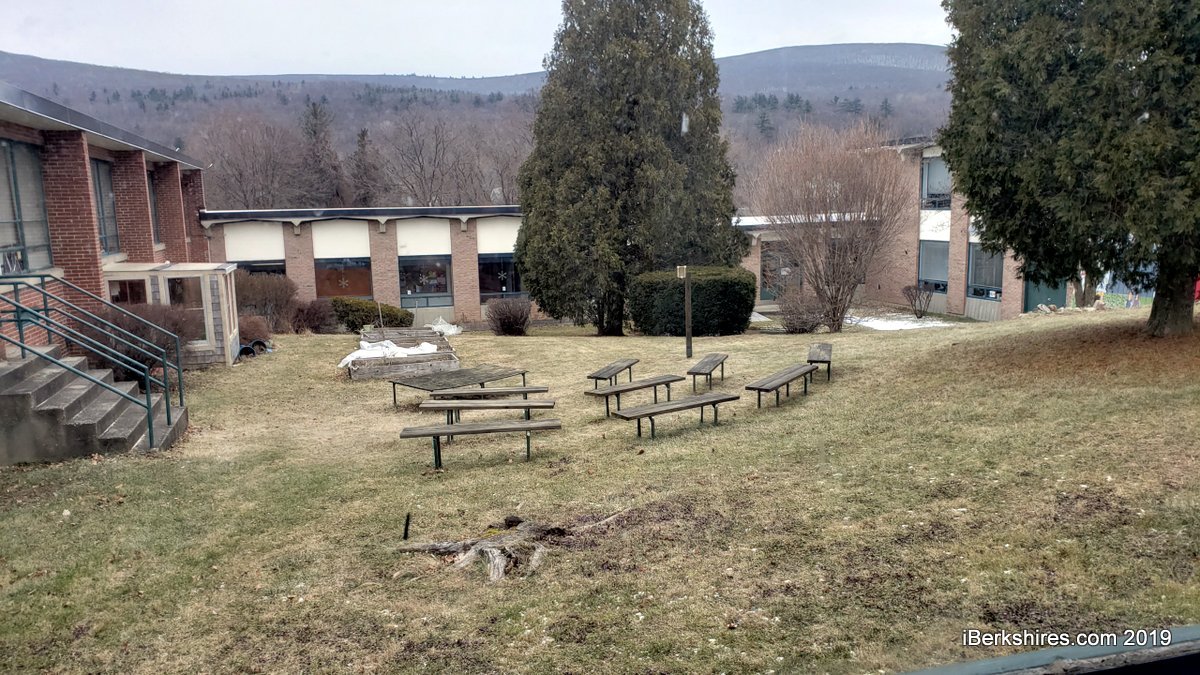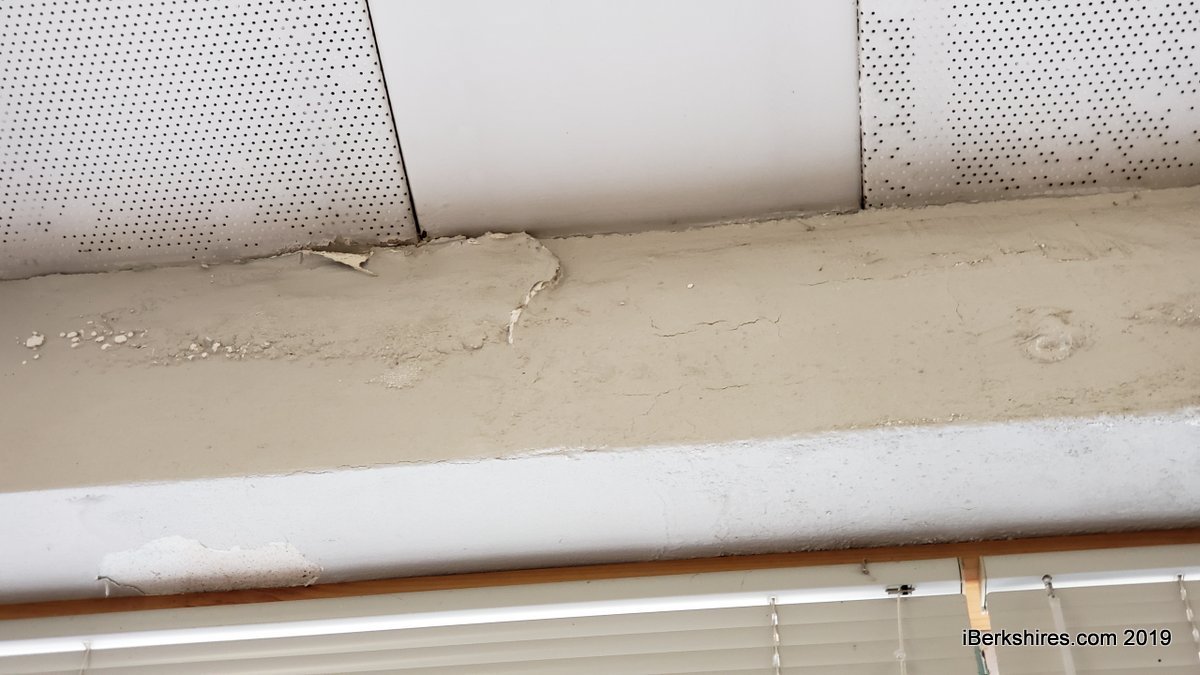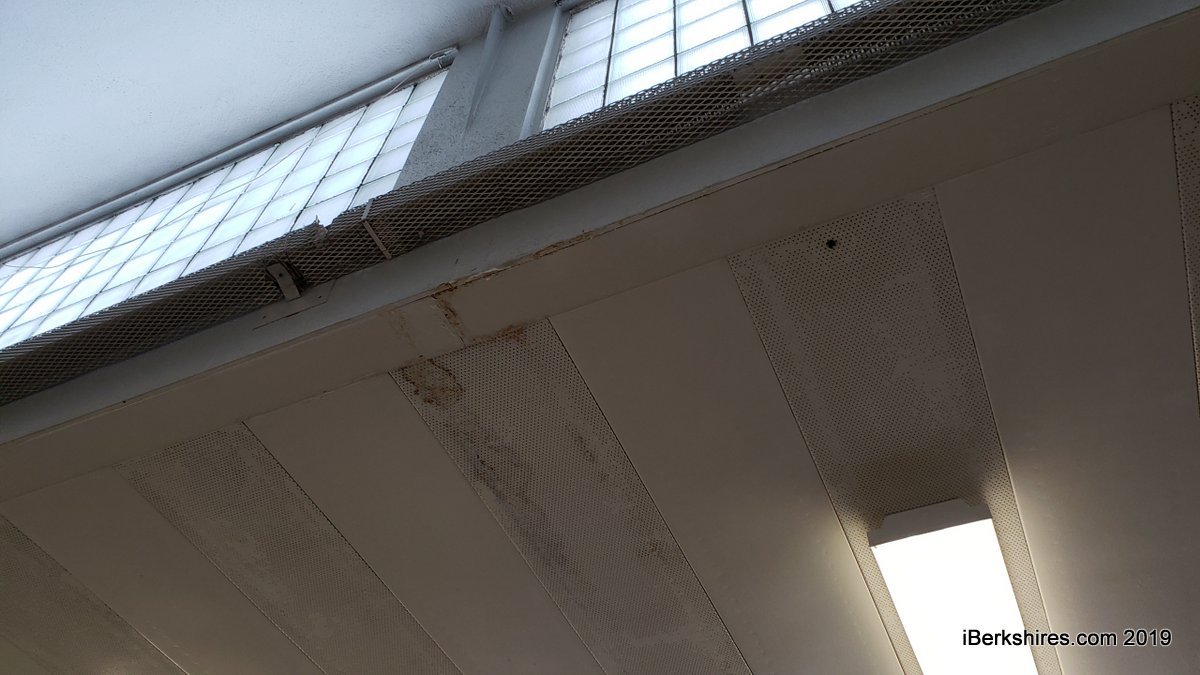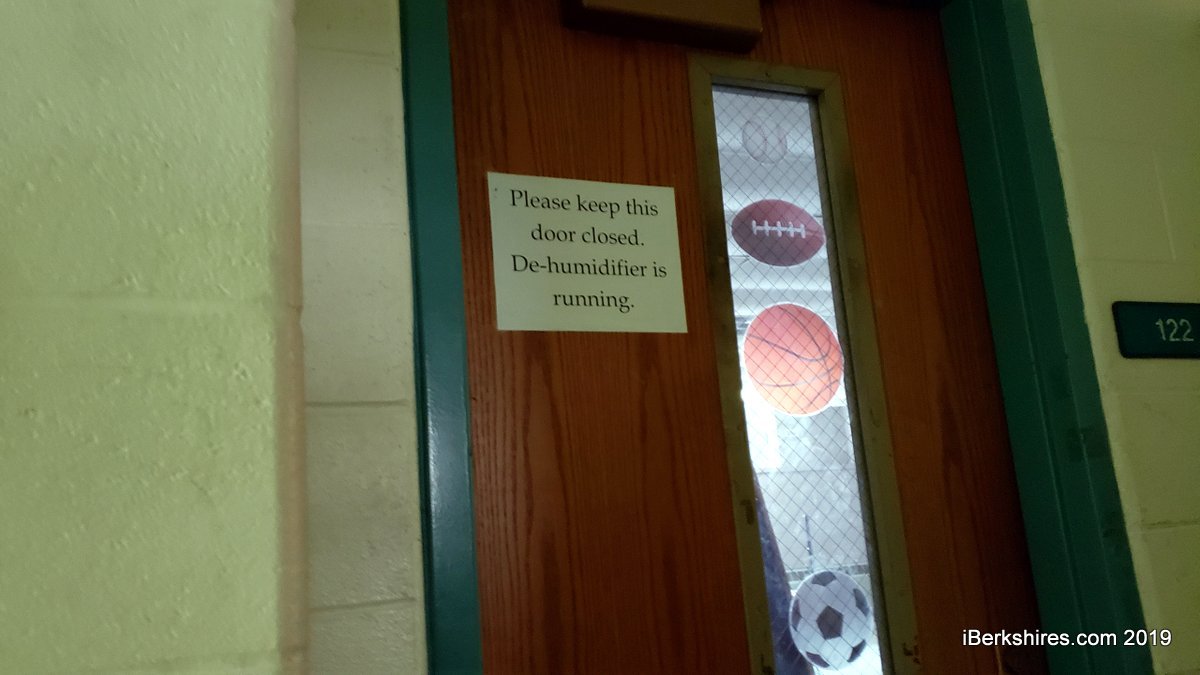
The facilities subcommittee and administrators discuss the conditions at Brayton and Greylock schools.
NORTH ADAMS, Mass. — The roof leaks, the windows weep, parts of the school are cool and others are hot — and a water line to the outdated boiler's kept open with a clothespin.
That's only scratching the surface.
The School Committee's finance and facilities subcommittee toured Greylock School on Saturday to get a close up look at the 60-year-old structure's challenges. The consensus at the end was to push forward with an updated application to the Massachusetts School Building Authority to address the building's many deficiencies.
But the recommendation for Brayton Elementary, which is facing roofing issues, was to hold off until the full extent of the problems could be determined.
Greylock has been on the city's school priority list for years and has not had any significant upgrades since the mid-1960s. The MSBA had rejected the city's bid to renovate it along with the former Conte School back in 2011. Instead, the former middle school underwent a $30 million renovation and reopened as Colegrove Park Elementary School, replacing the now-closed Sullivan School.
"Greylock was already a problem when Sullivan went in, it was a No. 2 priority," noted subcommittee member Tara Jacobs. "That is already, what, eight years ago."
The problems with Greylock start right at the front door, as the administration office is out of sight around a corner, causing security concerns. The office is cramped and the dean of students had to be moved to the second floor; the nurse's office is off the main office and offers little privacy and only two beds.
A major obstacle is the number of stairs linking the three levels with only a single ramp connecting part of the newer section to the original building.
Electrical outlets are at a premium, as is space, with some classrooms converted into multiple use areas for special education — up to three teachers might be using it at a time. A short hallway to the outside is being used as one-on-one space and windowless, cramped room converted from a kitchen area is utilized for meetings with staff and parents.
"This is terrifying," said committee member Nicholas Fahey as the group poked their heads into the claustrophobic meeting room.
The roof was addressed to some extent in 2001 but water is making its way into the building in several areas. In the 1953 section, the water issues are evident along the metal trusses where the old glass block style windows meet. New Facilities Director Robert Flaherty said he's had to put out buckets when there's heavy rain or backups from melting on the roof.
"I've been in here when it's dripping and it's distracting," Superintendent Barbara Malkas said.
Water issues also can be seen where the concrete is spalling, particularly in the 1953 building.
The teachers' lounge is several steps down in the bottom level. It had to be closed for several months because of a sewer break (one of two in recent years) but once cleaned, the teachers went to work painting and decorating the space. Next door is a storage area that doubles as the server space and also where the water line comes in, which can cause condensation.
There's only one oil-fired steam boiler operating that dates to 1992; a second boiler is offline but can be put to work as a last resort. There's still a massive coal-burning furnace off to the side with access for coal deliveries. The single-zone heating system has pipes running through a cramped tunnel and pipe breaks in the aged system are not uncommon.
"They've done a really good job maintaining it to the best of their abilities," said Malkas as the tour ended. "But there are concerns."
Over at Brayton, which was built in 1994, the concerns are also about water — water seeping through the roof, water sweating through the below-ground classrooms. Two rooms had to be taken out of service because of respiratory concerns from mold.
Room 122 wasn't being used during a period in June when cool rainy days suddenly switched to hot and steamy. When the room was reopened for the summer school program, educators got an unpleasant surprise.
"This room, the walls began to sweat and it was locked up for eight days and when they came back, there was mold everywhere," Malkas said of Room 122.
Everything was removed and the classroom cleaned and repainted with mildew-resistant paint but because of the continued use of dehumidifiers and allergy issues in that room and Room 123 across the hall, both were closed as classrooms.
Malkas suspected it could be related to the roofing issues and Flaherty said they'd have to determine where the water was coming from.
In an upper classroom, it's definitely coming through the roof. Water spots are evident in the panels and there's been dripping from the ceiling. Principal Carolyn Wallace said bees have also been getting into the building, possibly from under the sheathing. Flaherty said there's also concerns about leaking into the gym that the school shares with the Northern Berkshire Family YMCA.
Flaherty said he couldn't get on the roof to check for leaks or drainage problems until the weather improved greatly.
"With these temperatures, you don't want to walk on a rubber roof. You don't want to walk on any roof when it's this cold because you can compromise it," he said.
Malkas felt that Greylock was the priority but the city could also apply for the MSBA's accelerated repair program for the roof issues at Brayton. The core building program and the repair programs are separate and she didn't think applying for one would affect the other.
Statements of interest for Greylock have been submitted to the MSBA for the last couple of years. The state agency did a tour — a senior site visit — two years ago, but Malkas thought the SOI should be significantly updated and another site visit planned.
"That's something I feel absolutely, we need to update our core SOI for Greylock no matter what," she said.
Jacobs asked how the decline in enrollment would affect a school building project. Malkas said an enrollment study should be submitted with the application and suggested the New England School Development Council do the study. It would look at the census numbers, surrounding towns, real estate sales, etc., to come up with an enrollment forecast, she said.
"We actually saw greater percentages of decline back in the early 2000s but we are still seeing that trickle effect and it's across grade levels," the superintendent said, adding the decline does not appear to be from students shifting to McCann Technical School or Berkshire Arts & Technology Public Charter School. "We do see a decline in those grade levels, but not any different than we've seen the last few years."
However, that decline is not enough to consider closing one of three elementary schools.
"I don't see us being able to close a school and absorb the students into one school unless we were going to build a much bigger school," Malkas said. "That's the only way it would work."
The deadline for the core school building program is in April, so the SOI, enrollment study and votes by both the School Committee and City Council to submit the application would have to be completed by then. The accelerated repair program has a deadline in February.
The subcommittee determined to endorse the core program application but recommend holding off on the accelerated repair until the roof at Brayton could be appraised and either patched or cost estimates procured. Then the School Committee can decide if it should address the roof as a capital repair project or apply to the MSBA.
The subcommittee will present its report at the School Committee meeting in February.

